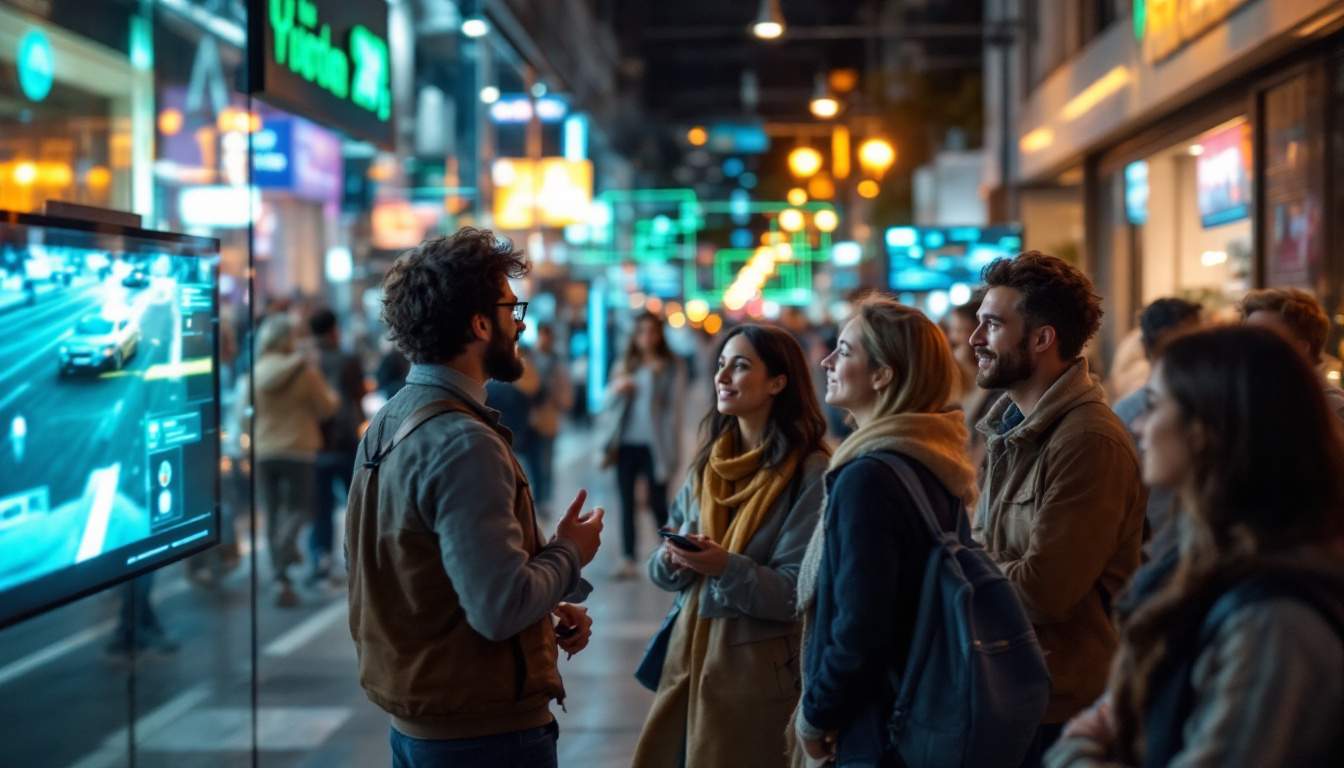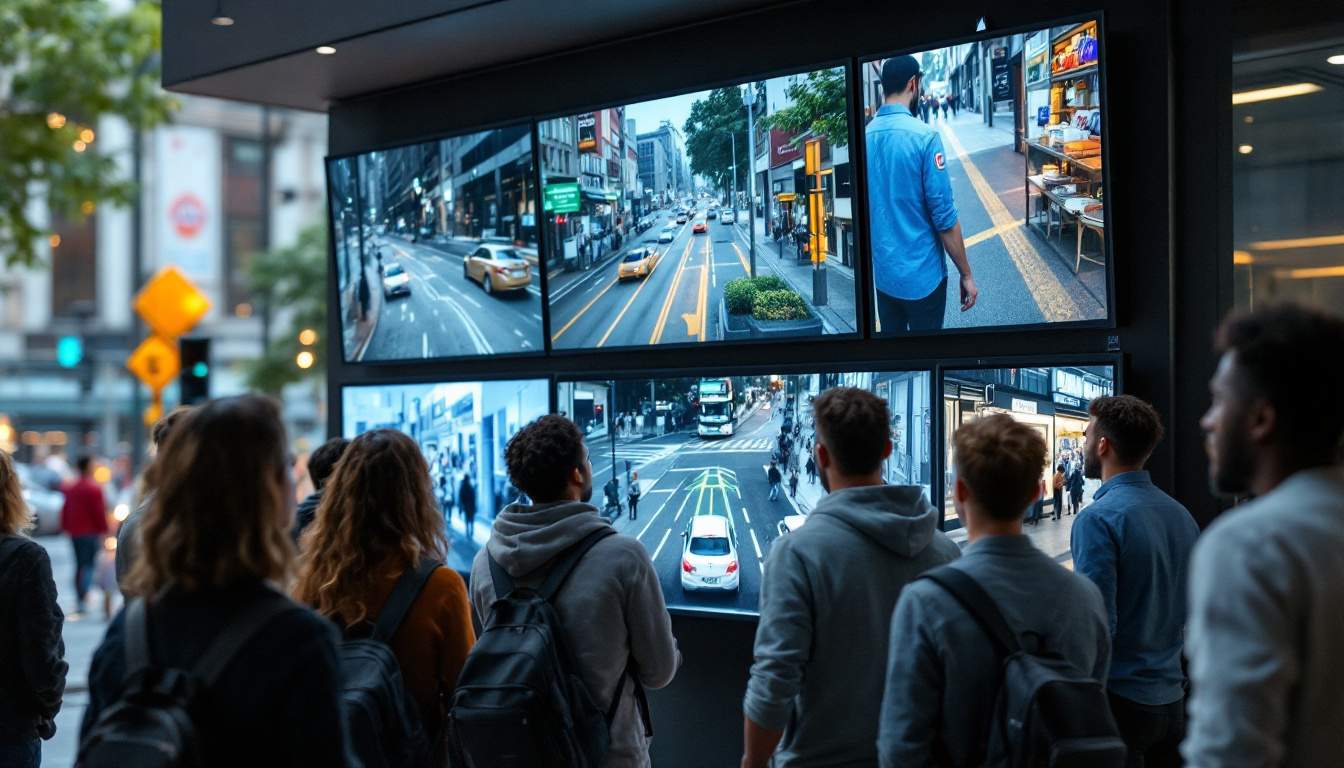Object Detection: AI Video Analytics Explained
Object detection, a critical component of AI video analytics, is a computer vision technique that allows machines to identify and locate objects in images and videos. This technology has been instrumental in numerous applications, including surveillance, autonomous driving, and image retrieval systems. The following sections will delve into the intricacies of object detection, its role in AI video analytics, and its real-world applications.
Object detection is a two-fold process: it not only identifies what objects are present in an image or video, but it also recognizes where these objects are located. This is achieved through a combination of image classification (identifying what the objects are) and object localization (identifying where the objects are). The result is a system that can accurately detect and locate multiple objects in a single image or video frame.
Understanding Object Detection
Object detection is a complex process that involves several steps. Initially, the system scans the image or video frame using a sliding window, which moves across the image at various scales and aspect ratios. This generates a multitude of potential bounding boxes, which are rectangular regions that may contain an object.

Each potential bounding box is then passed through a classifier, which determines whether it contains an object of interest and, if so, what type of object it is. The classifier is trained on a large dataset of labeled images, enabling it to recognize a wide variety of objects. The final step in the process is non-maximum suppression, which eliminates overlapping bounding boxes, leaving only the most probable ones.
Role of Convolutional Neural Networks
Convolutional Neural Networks (CNNs) play a crucial role in object detection. CNNs are a type of deep learning model that are especially good at processing grid-like data, such as images. They consist of multiple layers of neurons, each of which applies a series of filters to the input data. These filters allow the CNN to learn complex features and patterns in the data, which it can then use to identify and locate objects.
The use of CNNs in object detection has led to significant improvements in accuracy and efficiency. Traditional object detection methods, such as Haar cascades and Histogram of Oriented Gradients (HOG), are unable to learn complex features and are therefore less accurate and slower than CNN-based methods. Furthermore, CNNs can be trained on large datasets, enabling them to recognize a wider variety of objects.
Types of Object Detection Algorithms
There are several types of object detection algorithms, each with its own strengths and weaknesses. Some of the most popular ones include R-CNN, Fast R-CNN, Faster R-CNN, and YOLO (You Only Look Once).
R-CNN and its variants (Fast R-CNN and Faster R-CNN) are region-based methods that generate potential bounding boxes and then classify each one. These methods are highly accurate, but they are also computationally intensive and therefore slow. On the other hand, YOLO is a single-stage method that performs detection and classification simultaneously. This makes it much faster than the R-CNN variants, but at the cost of some accuracy.
Object Detection in AI Video Analytics
Object detection plays a crucial role in AI video analytics, enabling systems to analyze video footage in real-time and extract valuable information. This has numerous applications, including surveillance, traffic monitoring, and autonomous driving.
In surveillance, for example, object detection can be used to identify and track individuals or vehicles, alerting security personnel to any suspicious activity. In traffic monitoring, it can be used to count vehicles, detect traffic violations, and monitor traffic flow. And in autonomous driving, it can be used to detect other vehicles, pedestrians, and obstacles, helping the vehicle navigate safely.
Real-Time Object Detection
Real-time object detection is a critical requirement in many AI video analytics applications. This requires the object detection system to process video frames as they are captured, without any delay. Achieving real-time performance is challenging due to the computational complexity of object detection algorithms, but it is essential for applications such as surveillance and autonomous driving, where delays can have serious consequences.
Several strategies can be used to achieve real-time performance, including optimizing the object detection algorithm, using hardware acceleration, and employing edge computing. Optimizing the algorithm involves making it more efficient, either by simplifying the model or by using more efficient methods for tasks such as image preprocessing and non-maximum suppression. Hardware acceleration involves using specialized hardware, such as GPUs, to speed up computation. And edge computing involves processing the video footage on the device itself, rather than sending it to a remote server, which reduces latency.
Object Tracking
Object tracking is another important aspect of AI video analytics. Once an object has been detected in a video frame, the system needs to be able to track it as it moves from frame to frame. This is a challenging task due to changes in the object's appearance, occlusions, and camera motion.
There are several methods for object tracking, including point tracking, kernel tracking, and silhouette tracking. Point tracking involves tracking a set of points from frame to frame. Kernel tracking involves tracking the object's region of interest, which is defined by a bounding box or an ellipse. And silhouette tracking involves tracking the object's silhouette, which is obtained by segmenting the object from the background.
Applications of Object Detection in AI Video Analytics
Object detection in AI video analytics has numerous real-world applications. In surveillance, it can be used to detect intruders, monitor crowd behavior, and track individuals or vehicles. In traffic monitoring, it can be used to detect traffic violations, monitor traffic flow, and count vehicles. And in autonomous driving, it can be used to detect other vehicles, pedestrians, and obstacles.

Other applications include sports analytics, where it can be used to track players and analyze their movements; retail analytics, where it can be used to monitor customer behavior and track inventory; and healthcare, where it can be used to monitor patient behavior and detect falls or other incidents.
Surveillance
In surveillance, object detection can be used to identify and track individuals or vehicles, alerting security personnel to any suspicious activity. This can help prevent crimes, protect property, and ensure public safety. For example, in a shopping mall, an object detection system could detect a person loitering in a restricted area and alert security personnel.
Object detection can also be used in video analytics to monitor crowd behavior. By detecting and tracking individuals in a crowd, the system can identify patterns of movement, detect unusual behavior, and estimate crowd size. This can be useful in a variety of scenarios, from managing crowd flow at a concert to identifying potential threats at a public event.
Autonomous Driving
In autonomous driving, object detection is used to detect other vehicles, pedestrians, and obstacles. This information is critical for the vehicle's navigation system, which needs to know the location and movement of other objects in order to navigate safely. For example, if the object detection system detects a pedestrian stepping onto the road, the vehicle can slow down or stop to avoid a collision.
Object detection in autonomous driving is a challenging task due to the dynamic nature of the environment and the need for real-time performance. However, advances in deep learning and computer vision have led to significant improvements in accuracy and speed, making autonomous driving a reality.
Challenges and Future Directions
Despite the advances in object detection, several challenges remain. One of the main challenges is dealing with variations in object appearance due to changes in lighting, viewpoint, and occlusion. Another challenge is achieving real-time performance, especially in applications such as autonomous driving where delays can have serious consequences.

Future directions in object detection include improving the accuracy and speed of detection algorithms, developing methods for detecting objects in 3D, and integrating object detection with other computer vision tasks, such as semantic segmentation and depth estimation. With the rapid advances in AI and computer vision, the future of object detection in AI video analytics looks promising.
Improving Accuracy and Speed
One of the main areas of research in object detection is improving the accuracy and speed of detection algorithms. This involves developing new models and algorithms, as well as optimizing existing ones. For example, researchers are exploring the use of capsule networks, a type of neural network that can capture spatial relationships between features, to improve detection accuracy.
On the speed front, researchers are exploring methods for reducing the computational complexity of detection algorithms, such as pruning and quantization. Pruning involves removing unnecessary neurons from the neural network, reducing its size and computational complexity. Quantization involves reducing the precision of the network's weights, which can significantly reduce the memory and computation requirements.
3D Object Detection
Another area of research is 3D object detection, which involves detecting objects in 3D space rather than in 2D images. This is particularly relevant for applications such as autonomous driving, where the system needs to know the location and movement of objects in 3D space.
3D object detection is a challenging task due to the additional complexity of dealing with 3D data. However, advances in 3D sensing technologies, such as LiDAR and depth cameras, as well as improvements in 3D convolutional neural networks, are making 3D object detection a reality.
Integration with Other Computer Vision Tasks
Another future direction is the integration of object detection with other computer vision tasks, such as semantic segmentation and depth estimation. Semantic segmentation involves classifying each pixel in an image as belonging to a certain class, such as 'car', 'road', or 'pedestrian'. Depth estimation involves estimating the distance from the camera to each pixel in the image.
By integrating object detection with these tasks, the system can gain a more complete understanding of the scene, which can improve its performance. For example, in autonomous driving, knowing the location and movement of other vehicles (object detection), the type of road surface (semantic segmentation), and the distance to the vehicles and road surface (depth estimation) can help the vehicle navigate more safely and efficiently.


